|
A review of James Petras' "NGOs: in the service of imperialism"(2007).
In 'NGOs: In the service of Imperialism' (2007), James Petras introduces Neo-compradors as a new class in societies of the Global South: defining it as the vehicle for imperialism's subversive soft power.
What's most interesting about Neo-compradors, and what distinguishes them from the traditional forces of reaction (which aim to perpetuate imperialism) is their leftist façade. Unlike traditional forces of reaction, neo-compradors don't triumph imperialism through wars and astride tanks, but rather through color revolutions and from a seeming moral high grounds. The Economic Point of Departure
Imperialism which manifests most iconically in military violence primarily grows out of the capitalist mode of production. (1) Capitalism develops beyond its free-market stage into market monopolies (or more precisely into oligopolies); the competition which characterizes the free market in the early stages of capitalism brings about its end in the later stages. (2) Capital grows further concentrated through the inception of Banks where industrial capital is merged with finance capital; wealth accumulated from the surplus value of labor in industries statically multiplies from interests on loans. (3) Capital-rich oligarchs infiltrate the state to where taxation is taken as a new source of wealth; oligarchs become entitled to the money of taxpayers via their affiliates in the bureaucracy of the state (Lenin, 1916).
Exploitation as a Contradiction
Imperialism, like capitalism from which it develops, is conditioned by a contradiction of exploitation. This latent contradiction is comported (or poised) towards resolution by a revolutionary antithetical force, i.e. the anti-imperialist party. Reactionary forces aim to perpetuate the contradiction of exploitation. Progressive forces aim to hasten its resolution (Mao, 1937).
What is novel to James Petras and the handful of disciplined anti-imperialist socialist academics is recognizing that the Reactionary forces (actors and tactics) which aim to perpetuate exploitation are dynamically evolving historically to ensure optimal results. The forces of Reaction assume different actors and employ different tactics to approach different demographics.
The contradiction of exploitation latent in capitalism is extended to imperialism given that the latter is a byproduct of the former. In imperialism, exploitation is internationalized from capitalist vis-a-vis workers to oligarchs (of the core) vis-a-vis nations (of the periphery). The internationalization of exploitation was first executed by direct occupation and/or settlements (i.e. through colonizing armies) then by mediated control (i.e. through comprador bureaucrats) then by co-opting social movements (i.e. through neo-comprador 'revolutionaries').
Compradors in South West Asia
In their marriage to the state, the oligarchy consolidated the seeds for international exploitation. The armies of Great Britain and France were at the lead in the conquests of colonizing other nations: looting the resources and exploiting the peoples of these nations for their own ends through direct occupation.
European settler colonies slowly crumbled across the world under the plight of indigenous liberation movements but also for being contended by the slowly emerging US empire and being exhausted by the war with Nazi Germany. After that hegemony was no longer realized through direct occupation (colonialism), rather it was realized mediately through client regimes (compradors). The former colonizer established the local bourgeoisie (and/or feudal lords), who enjoyed close affinity with the latter, as the ruling class. This formula of governance allowed the colonizers to preserve their interests in their former settler colonies behind the façade of self-determination. The Levant
In Lebanon, liberation from French colonization left in its wake a handful of upper-class urban families in charge of governance. The oligarchs were closely linked to the French due to religious affinity, familial bonds, and most importantly common interests. In Iraq and Jordan, similar to the Lebanese urban families, the Hashemite dynasties succeeded British colonialism.
The Gulf
The succession of authority in the Gulf was different. Arabia and Persia weren't colonized but they too fell victim to native compradors with ties to Britain. In Iran, the Pahlavi dynasty overthrew the Qajars in a military coup to rule over the oil-rich central Asian country and established themselves as compradors. Similarly, on the opposite side of the gulf, the Saud clan consolidated themselves as the rulers of most of Arabia by raiding and slaughtering the different tribes of the peninsula and then established themselves as compradors. Rather than being appointed as compradors, the Saud House and the Pahlavi Dynasty consolidated themselves as sovereigns and then became compradors.
Palestine
Palestine is the only exception to the trend of native rulers replacing colonizers: Zionism succeeded British colonialism as the authority ruling over Palestine. Despite being a settler colonialist entity, "Israel" doesn't fall under the umbrella of the international regime of European colonialism, but rather falls under the umbrella of the international regime of Pax Americana Imperialism; whereby "Israel" is commonly understood to act as "an advanced American military base" in the region.
Defining Neo-compradors in reference to Compradors
Decolonization neutralized the colonialist empires of France and Great Britain leaving in its wake a plethora of relatively autonomous nation-states. Imperialism in colonialism was succeeded by imperialism through colonialism. More so, the focal point of international imperialism shifted from Europe to the opposite side of the Atlantic. The US inherited the domain of dominion of its predecessor European powers.
The comprador class is the bourgeois class that was coopted by imperialists to act in their stead. Descending from feudal families, these compradors were naturally rich and influential. Their authority over their kin was further consolidated through their commitments to their offshore handlers. The neo-comprador class, in contrast, isn’t conditioned necessarily by a bourgeois character (i.e. a neo-comprador doesn't have to own means of production). Neocompradors are the intellectual strata of the middle to lower classes. They climb up the hierarchy of social classes through the influx of foreign capital funneled to them by their offshore handlers. NGO leaders
James Petras identifies neo-compradors as the leaders of NGOs sponsored by Western funds/ organizations like the National Endowment for Democracy (NED) and other variants of it like the Open Society Foundation, the National Democratic Institute, US Agency for International Development, the International Republican Institute, Middle East Policy Institute and the European versions like the European Endowment for Democracy which primarily serve as fronts for covert governmental funding for non-governmental organizations.
The NED fund specifically was established by American President Lyndon Johnson in the 1960s during the cold war’s ideological battle between the US and the USSR as an alternative to CIA covert funding. After it was revealed that private newspapers and parties in Eastern Europe were receiving funding from the CIA, President Johnson, to avoid diplomatic escalations with communist countries in international fora, opted to reframe this sponsor-recipient overseas relationship into a private-private mechanism instead of a public-private mechanism through the NED.
The NGOs in question whose leaders constitute the neo-comprador class are specifically those engaged in shaping and introducing narratives into the political discourse i.e., party-type or newspaper-type NGOs such as think tanks, certainly not NGOs like Doctors Without Borders. Unproductive Class
“The NGO leaders can be conceived of as a kind of a neo-comprador group that doesn’t produce any useful commodities but does function to produce services for the donor countries- mainly trading in domestic poverty for individual perks” (J. Petras, 2007, p:430).
NGO work is unproductive useless labor. While many NGO leaders may present themselves as full-time human rights activists, this is neither productive nor necessary labor nor is it political work. It is, as Petras described it, capitalizing on the poverty of their kinsmen and kinswomen to garner popular support for their movements which aim to promote the security and economic interests of imperialism in return for steady and hefty salaries which allow them to climb up the social hierarchy despite not being part of the national bourgeois. Intellectuals Employing Leftist Discourse
Another characteristic definition of neo-compradors that Petras points out is the intellectual background and the type of discourse which they employ to mobilize people.
"The NGOs co-opt the language of the Left: 'popular power' 'empowerment', 'gender equality', 'sustainable development', 'bottom-up leadership', etc. The problem is that this language is linked to a framework of collaboration with donors and government agencies that subordinate activity" (J. Petras, 2007, p:434). By establishing these networks of neo-compradors, Imperialism capitalized on its own ill-doings (i.e. the exploitative social conditions of neoliberalism) to give momentum to its 'revolutionary' footsoldiers. "The growth of radical socio-political movements and struggles provided a lucrative commodity which ex-radical and pseudo popular intellectuals could sell to interested, concerned and well-financed private and public foundations closely tied with European and US multi-nationals and governments." (J. Petras, 2007, p:432). Imperialism's need for neo-compradors turned political activism into a job market. Whereby, unemployed intellectuals and undisciplined leftists compete to sell their revolutionary experience and potential to imperialist interests. The neo-compradors sprout at times of crisis to assume antagonistic positions to the government. They preside over the social movements which arise in opposition to the government and start shaping the discourse in favor of their handler's economic and security interests. The less charismatic neo-compradors serve as native informants: picking out the targets for their handlers’ sanctions. The more charismatic neo-compradors are tasked with the more noble pursuit of shaping the counterdiscourse. They often present themselves as human rights activists brandishing popular causes like feminism, queer liberation, and/or anti-racism. In brief, neo-compradors constitute a new socio-economic class that rises as a byproduct of late-stage imperialism. It alleviates intellectuals from their lower-middle-class status. In Contrast to Compradors
"Western funding of the NGOs as critics was a kind of buying insurance in case the incumbent reactionaries faltered." (J. Petras, 2007, p:432).
While the neo-comprador class is comparable to the earlier comprador class, it differs in essence. In the case of compradors, the bourgeoisie is prompted towards collaborating with imperialism motivated by the need to preserve their national interests from potential revolution. In the case of neo-compradors, what prompts intellectuals towards collaborating with imperialism is their dire economic conditions. They themselves are victims of imperialism and the neoliberal economic model that it enforces. They save themselves the anguish of neo-liberalism by 'revolting' for hefty paychecks. The compradors are part of the bourgeois class i.e., they own means of production or service. The neo-compradors don’t own means of production, their primary source of income is from their overseas handlers. Both compradors and neo-compradors act as agents of imperialism. Both aspire to realize the economic and security objectives of Imperialism. The former does so through the state apparatus while the latter does so in opposition to the state apparatus. The compradors typically employ authoritarian tactics to discipline the population in line with the objectives of imperialism while the latter employs populism to neutralize any potential anti-imperialist anti-capitalist revolution by coopting national dissent in favor of imperialist objectives. The neo-compradors "engage in complementary activity at the bottom neutralizing and fragmenting the burgeoning discontent resulting from the savaging of the economy." (J. Petras, 2007, p:440) Comprador and Neocomprador dynamics: Contrasting the Cases of Iran and Lebanon
Neo-compradors typically arise as a substitute for the compradors in the case of a popular revolution. In Iran, for example, Mohammad Reza Pahlavi the last Shah of Iran had served as the leading comprador of the US in the middle east during the cold war employing one of the largest militaries to police the middle east against the influence of communism and Arab nationalism.
The Shah made sure to crush any coalescing anti-imperialist movement not only in Iran but in the Middle East at large. In Lebanon back in the 1950s for example, the Shah offered extensive support to Chamoun's right-wing government against the democratic opposition: which was constituted by unionists, students, and workers in addition to a range of leftist and Arab nationalist parties. The Shah assisted Chamoun in quelling the opposition movement through direct assistance even establishing a headquarters for the SAVAK (Iranian National Intelligence and Security Agency) in Beirut. In Oman, when a socialist revolution was burgeoning against the Sultanate, dubbed the 'Dhofar Rebellion', the Shah went as far as deploying troops to the opposite side of the gulf to quell the socialist movement on behalf of the weakened sultanate. After the Shah was forcefully overthrown in 1979 by the Islamic revolution which consolidated an anti-imperialist regime to rule over Iran, compradors (i.e. the bourgeoisie collaborating with imperialism) were mass executed in revolutionary courts.
After the revolution, the Iranian government was filtered from any and all compradors. Thus US imperialism incepted neo-compradors to propagate its security and economic objectives in Iran by undermining the now anti-imperialist government.
The neo-compradors are typically incepted as a substitute for the compradors however in some cases they coexist.
In Lebanon, for example, NGOs had started mushrooming after the 2006 July war after Hezbollah managed to fight back a large-scale Israeli invasion and enforce a deterrence equation. Hezbollah grew to be a more prominent threat to American security interests and simultaneously more Lebanese parties started calling for the disarmament of the Lebanese resistance movement. Initially, the parties of the 14th of March coalition were the vanguards of this agenda. The 14th of march coalition was constituted of compradors. Most of them being part of the Lebanese bourgeoisie: owners of banks and gas stations and shareholders in many companies. Additionally, together with the 8th of March coalition parties, ran the Lebanese government for 18 years. The 14th of March coalition manifestly failed to realize the US's security objective of disarming Hezbollah however they weren't ousted from the government. Hezbollah continued to cohabitate the 14th of March parties given the confessional consociational nature of the Lebanese political system. In 2019, large-scale protests erupted all across Lebanon against the exploitative neoliberal policies employed by the Lebanese government and banks. The protests were expressly directed at the "establishment" at large. This atmosphere of a radical socio-political movement served as the perfect breeding ground for US' neo-compradors. What initially started as dissent against Lebanese Banks' Ponzi scheme and the government's neoliberal policies, was warped by Western-funded parties and media platforms into calls for the disarmament of Hezbollah.
Even in the rare cases where they coexist the neo-compradors and compradors are presented as rivals. The latter is typically part of the ruling elite i.e. the oligarchy while the former is organized in NGOs, small opposition groups, or alternative media.
"The mass of NGOs have co-opted most of what used to be the 'free-floating' public intellectuals who would abandon their class origins and join the popular movements. The result is a temporary gap between the profound crises of capitalism and the absence of significant organized revolutionary movements." (J. Petras, 2007, p:440) AuthorSammy Ismail
This article was produced by Almayadeen.
ArchivesAugust 2023
0 Comments
8/5/2023 Nearly 800 Indegenous Brazilians Were Murdered Under Bolsonaro's Rule, Report Shows. By: Robert McKenzieRead NowBrazil's former President Jair Bolsonaro | AP There were 800 Brazilian indigenous people murdered during the presidency of right-winger Jair Bolsonaro, a new report revealed today. The report Violence against Indigenous Peoples in Brazil, published by the Indigenous Missionary Council (CIMI) said that during Mr. Bolsonaro’s time in office, there were 795 cases of homicides against indigenous people throughout the country. The launch of the report at the National Conference of Bishops of Brazil (CNBB) was attended by indigenous leaders and representatives of the CNBB and Cimi, such as Ricardo Hoepers, general secretary of the CNBB, and the president of CIMI, Roque Paloschi. The states hardest hit by the killings were Roraima and Amazonas, home to the Yanomami community, where 208 and 168 people were murdered respectively. In Mato Grosso do Sul 146 killings were reported. The report also says that the highest rates of suicide were also to be found in these three states between 2019 and 2022. Nearly three-quarters of the total of the 535 indigenous people who took their own lives were from Roraima, Amazonas, and Mato Grosso do Sul. An increase in conflicts over territorial rights was also reported, especially in 2022, when 158 violent acts were reported, together with 309 cases of illegal exploitation of natural resources, invasions, and damage to indigenous property in 218 indigenous territories of 25 states of Brazil. The report of the tragic situation facing indigenous communities in Brazil during four years of Mr. Bolsonaro’s rule showed the loss of demarcations of indigenous lands, an increase in conflicts, and the dismantling of policies aimed at safeguarding indigenous peoples and their territories. Roberto Antonio Liebgott, one of the authors of the report, said: “This report, unlike the others, closes a cycle of perversity, of four years of brutality. That is why we took the trouble to bring the data collected from the last four years.” Morning Star AuthorRoger McKenzie is the International Editor of Morning Star, Britain’s daily socialist newspaper. This article was produced by Peoples world. Archives August 2023 8/5/2023 Niger is the fourth country in the Sahel to experience an anti-Western coup By: Vijay Prashad & Kambale MusavuliRead NowThe coup in Niger follows coups in Mali, Burkina Faso, and Guinea. Each of these was led by military officers angered by the presence of French and US troops and by economic crises inflicted on their countries At 3 am on July 26, 2023, the presidential guard detained President Mohamed Bazoum in Niamey, the capital of Niger. Troops, led by Brigadier General Abdourahmane Tchiani closed the country’s borders and declared a curfew. The coup d’état was immediately condemned by the Economic Community of West African States, by the African Union, and by the European Union. Both France and the United States—which have military bases in Niger—said that they were watching the situation closely. A tussle between the Army—which claimed to be pro-Bazoum—and the presidential guard threatened the capital, but it soon fizzled out. On July 27, General Abdou Sidikou Issa of the army released a statement saying that he would accept the situation to “avoid a deadly confrontation between the different forces which… could cause a bloodbath.” Brigadier General Tchiani went on television on July 28 to announce that he was the new president of the National Council for the Safeguard of the Homeland (Conseil National pour la Sauvegarde de la Patrie or CNSP). The coup in Niger follows similar coups in Mali (August 2020 and May 2021) and Burkina Faso (January 2022 and September 2022), and Guinea (September 2021). Each of these coups was led by military officers angered by the presence of French and US troops and by the permanent economic crises inflicted on their countries. This region of Africa—the Sahel—has faced a cascade of crises: the desiccation of the land due to the climate catastrophe, the rise of Islamic militancy due to the 2011 NATO war in Libya, the increase in smuggling networks to traffic weapons, humans, and drugs across the desert, the appropriation of natural resources—including uranium and gold—by Western companies that have simply not paid adequately for these riches, and the entrenchment of Western military forces through the construction of bases and the operation of these armies with impunity. Two days after the coup, the CNSP announced the names of the 10 officers who lead the CNSP. They come from the entire range of the armed forces, from the army (General Mohamed Toumba) to the Air Force (Colonel Major Amadou Abouramane) to the national police (Deputy General Manager Assahaba Ebankawel). It is by now clear that one of the most influential members of the CNSP is General Salifou Mody, former chief of staff of the military and leader in the Supreme Council for the Restoration of Democracy, which led the February 2010 coup against President Mamadou Tandja and which governed Niger until Bazoum’s predecessor Mahamadou Issoufou won the 2011 presidential election. It was during Issoufou’s time in office that the United States government built the world’s largest drone base in Agadez and that the French special forces garrisoned the city of Irlit on behalf of the uranium mining company Orano (formerly a part of Areva). It is important to note that General Salifou Mody is perceived as an influential member of CNSP given his influence in the army and his international contacts. On February 28, 2023, Mody met with the United States Chairman of the Joint Chiefs of Staff General Mark Milley during the African Chiefs of Defense Conference in Rome to discuss “regional stability, including counterterrorism cooperation and the continued fight against violent extremism in the region.” On March 9, Mody visited Mali to meet with Colonel Assimi Goïta and the Chief of Staff of the Malian army General Oumar Diarra to strengthen military cooperation between Niger and Mali. A few days later on March 16, U.S. Secretary of State Antony Blinken visited Niger to meet with Bazoum. In what many in Niger perceived as a sidelining of Mody, he was appointed on June 1 as the Nigerien ambassador to the United Arab Emirates. Mody, it is said in Niamey, is the voice in the ear of Brigadier General Tchiani, the titular head of state. Corruption and the West A highly informed source in Niger tells us that the reason why the military moved against Bazoum is that “he’s corrupt, a pawn of France. Nigerians were fed up with him and his gang. They are in the process of arresting the members of the deposed system, who embezzled public funds, many of whom have taken refuge in foreign embassies.” The issue of corruption hangs over Niger, a country with one of the world’s most lucrative uranium deposits. The “corruption” that is talked about in Niger is not about petty bribes by government officials, but about an entire structure—developed during French colonial rule—that prevents Niger from establishing sovereignty over its raw materials and over its development. At the heart of the “corruption” is the so-called “joint venture” between Niger and France called Société des mines de l’Aïr (Somaïr), which owns and operates the uranium industry in the country. Strikingly, 85 percent of Somaïr is owned by France’s Atomic Energy Commission and two French companies, while only 15 percent is owned by Niger’s government. Niger produces over 5 percent of the world’s uranium, but its uranium is of a very high quality. Half of Niger’s export receipts are from sales of uranium, oil, and gold. One in three lightbulbs in France are powered by uranium from Niger, at the same time as 42 percent of the African country’s population lived below the poverty line. The people of Niger have watched their wealth slip through their fingers for decades. As a mark of the government’s weakness, over the course of the past decade, Niger has lost over $906 million in only 10 arbitration cases brought by multinational corporations before the International Center for Settlement of Investment Disputes and the International Chamber of Commerce. France stopped using the franc in 2002 when it switched to the Euro system. But, fourteen former French colonies continued to use the Communauté Financiére Africaine (CFA), which gives immense advantages to France (50 percent of the reserves of these countries have to be held in the French Treasury and France’s devaluations of the CFA--as in 1994—have catastrophic effects on the country’s that use it). In 2015, Chad’s president Idriss Déby Itno said that the CFA “pulls African economies down” and that the “time had come to cut the cord that prevents Africa from developing.” Talk now across the Sahel is for not only the removal of French troops—as has taken place in Burkina Faso and in Mali—but of a break with the French economic hold on the region. The new non-alignment At the 2023 Russia-Africa Summit in July, Burkina Faso’s leader, President Ibrahim Traoré wore a red beret that echoed the uniform of the assassinated socialist leader of his country, Thomas Sankara. Traoré reacted strongly to the condemnation of the military coups in the Sahel, including to a recent visit to his country by an African Union delegation. “A slave that does not rebel does not deserve pity,” he said. “The African Union must stop condemning Africans who decide to fight against their own puppet regimes of the West.” In February, Burkina Faso had hosted a meeting that included the governments of Mali and Guinea. On the agenda is the creation of a new federation of these states. It is likely that Niger will be invited into these conversations. AuthorVijay Prashad is an Indian historian, editor, and journalist. He is a writing fellow and chief correspondent at Globetrotter. He is an editor of LeftWord Books and the director of Tricontinental: Institute for Social Research. He has written more than 20 books, including The Darker Nations and The Poorer Nations. His latest books are Struggle Makes Us Human: Learning from Movements for Socialism and (with Noam Chomsky) The Withdrawal: Iraq, Libya, Afghanistan, and the Fragility of U.S. Power. This article was produced by Globetrotter. Archives August 2023 The Global Majority is free to choose two different paths to counteract the rabid, cognitive dissonant Straussian neocon psychos in charge of imperial foreign policy; to relentlessly ridicule them, or to work hard on the long and winding road leading to a new multipolar reality. Reality struck deep at the Russia-Africa summit in St. Petersburg, with its astonishing breadth and scope, reflected in the official declaration and key facts such as Russia writing off no less than $23 billion in African debt, and President Putin calling for Africa to enter the G20 and the UNSC (“It’s time to correct this historical injustice.”) Three interventions in St. Petersburg summarize the pan-African drive to finally get rid of exploitative neocolonialism. President of Eritrea Isaias Afwerki: “They are printing money. They are not manufacturing anything at all, it’s printing money. This has been one of their weapons globally – the monetary system… sanctions here, sanctions there… We need a new financial architecture globally.” President of Burkina Faso, Ibrahim Traoré, the face of a resurgent Global South and the world’s youngest leader: “A slave that does not rebel does not deserve pity. The African Union (AU) must stop condemning Africans who decide to fight against their own puppet regimes of the West.” President of Uganda Yoweri Museveni: “One facet of neo-colonialism and colonialism was Africa being confined to producing only raw materials, crops, like coffee, and minerals (…) This issue is the biggest factor why the African economies are stunted; they do not grow, because all the value is taken by other people (…) So, what I want to propose to Russia and China is to discourage as a policy the importing of raw materials from Africa, to instead work with the Africans to add value at source.” In a nutshell: pan-Africa should go all-out creating their own brands and value-added products, without waiting for “approval” from the West. The South African dramaSouth Africa is an immensely complex case. Under extreme pressure from the usual suspects, Pretoria had already succumbed to the collective West hysteria related to Putin’s attendance of the upcoming BRICS summit, settling for the physical presence of Foreign Minister Lavrov and Putin via videoconference. Then, during a personal meeting with Putin in St. Petersburg, President Cyril Ramaphosa decided to speak in the name of all African leaders, thanking Russia for the offer of free grain, but stressing they had not come to “receive gifts; Africa proposes the return of the grain deal.” Translation: this is not about free grain offered for several African nations; this is about Pretoria wanting to cash in on the deal, which privileges globalist oligarchs and their Kiev vassal. Now compare it with the Russian position. Putin once again made it very clear: fulfill our demands and we return to the grain deal. Meanwhile, Russia remains a leader in wheat production – as it was before; and while prices keep rising on global markets, Moscow will share the income with the poorest African nations. Tensions inside BRICS, as illustrated in this case, are painfully real, and come from the weakest nodes. For all the devious rhetoric, the fact is India and Brazil prefer BRICS+ to proceed slowly, as sherpas confirm off the record. Among the over 40 nations – and counting – which are dying to become part of the club, Indonesia and Saudi Arabia are very well positioned to be accepted in the first tier of BRICS+ members, unlike Argentina (which basically paid an IMF loan so it can continue to be paying IMF loans). Reality is dictating the slow approach. Brasilia – under extreme pressure from the “Biden combo” – has a minimalistic margin of maneuver. And New Delhi is proposing first an “observer” status for prospective members, before full admission. Very much like in the Shanghai Cooperation Organization (SCO), whose recent summit was decided by New Delhi to be held online. For a very simple reason: India did not want to sit on the same table with China. What’s worrying is that the practical, gargantuan work schedule for both BRICS and the SCO is being slowed down by a toxic mix of internal squabbles and foreign interference. Yet the Russia-China strategic partnership must have anticipated it – and there are contingencies in place. Essentially, broader discussions are accelerated while minor partners get their act together (or not…) What’s clear is that, for instance, Indonesia, Iran and Saudi Arabia possibly being admitted to BRICS+ will immediately change the internal balance of power, and the weak links will necessarily have to catch up. EAEU to the rescue St. Petersburg also demonstrated something crucial in the evolving multilateral organization front: the renewed importance of the Eurasia Economic Union (EAEU). The EAEU is fast expanding beyond Central Asia towards Southeast Asia (a free trade agreement with Indonesia is imminent), Africa and crucially, the DPRK: that was discussed in detail during Defense Minister Shoigu’s rock star welcome in Pyongyang. All that spells out a road map like this: the EAEU in the vanguard, in parallel to China’s BRI (crucial forum coming up in Beijing in October) until BRICS+ and SCO gridlock is solved. Only one BRICS member without which is impossible to build Eurasia integration has serious problems with China: India (and that includes rivalry for influence in Africa, West Asia and Central Asia). Simultaneously, there’s only one BRICS member capable of influencing India: Russia. Now that’s a challenge for the ages. Yet Moscow does have the potential – and the competence – for regulating the whole new, emerging system of international relations. The timing for implementing what will be in fact a new world system is now, and immediately ahead: from 2025 to 2030. So Russia-India relations will arguably become the key to fully unlock BRICS+. Issues will include an iron-clad Russian oil road to India via Rosneft; solving the Afghanistan riddle (with Moscow keeping Beijing and New Delhi in sync); a more muscular presence within the SCO; closer security deliberations among the three Ministries of Defense; including Chinese and Indian observers in the Russia-Africa process; and all of the above micro-managed by Putin himself. If China-India competition is already a big deal, we should expect it to become even more complex after 2030. So here’s Russia facing yet another primordial historical/cultural mission. This goes way beyond the Himalayas. It spans the full arc of China-India competition. And don’t forget to call the Steel Kitten It’s always immensely enlightening to follow BRICS-related analyses by Sergey Glazyev, the Minister of Integration and Macroeconomics at the EAEU’s Economic Commission. Glazyev, in two major interviews, has confirmed that a “sanction-proof” BRICS digital unit of account is under discussion, based not only on BRICS national currencies but also a basket of commodities. He also confirmed that “we” are working to establish an internal BRICS group to design and establish the new system (by the way, these discussions within the EAEU are way more advanced). According to Glazyev, a payments system outside of SWIFT can be set up through a network of state-run digital currencies – not to be confused with cryptocurrencies backed only by private speculators. Glazyev also forcefully defends the adoption of the digital ruble. He argues that’s the way to track blockchain transactions and prevent non-intended use of funds – as in diversion into speculative markets. Apart from all the huge challenges, the optimal path ahead spells out EAEU and BRICS+ observing international law and slowly but surely building the payments system capable of circumventing massive imperial choke points. A new BRICS currency can wait. What matters is the evolution of so many interconnections as the new system’s infrastructure is being built. And that brings us once again to North Korea. The Shoigu visit de facto cleared the path for the DPRK to totally align with the Russia-China strategic partnership in the massive Eurasian integration/development/mutual security process. Oh, the ironies of “post-everything” History. The Hegemon may have actually been trapped into destroying NATO as a credible military force just as Russia-China reinvigorated a major ally in Northeast Asia and the Far East – complete with nuclear power, ballistic missiles, and a hyper-productive industrial military complex. So the Straussian neocon psychos want to expand their unwinnable Forever War to rabid hyena Poland and the Baltic chihuahuas? As in first we go to Moscow, then we take Beijing? Be our guest. But first be sure to place a call to Global South powerhouse DPRK. Steel Kitten Kim Yo-jong, Kim Jong Un’s younger sister, will be delighted. AuthorTYLER DURDEN This article was produced by Zerohedge. Archives August 2023 8/4/2023 Celebrating Moncada at 70: The setback that was turned into victory By: Gloria La RivaRead NowSantiago de Cuba At 5:12 a.m., July 26, 1953, 100 men and two women under the leadership of Fidel Castro attacked with arms the Moncada military barracks in Santiago de Cuba. The purpose? To initiate the revolutionary battle against dictator Fulgencio Batista, attain weapons from the defeated soldiers and go into the mountains to continue the struggle until victory. The plan was the same at the Carlos Manuel de Céspedes barracks at Bayamo, 80 miles away. But the Moncada assault failed. Within hours a bloody massacre by Batista’s army ensued. Only six rebels died in combat; 55 men were captured, tortured and slaughtered. Yet, the Moncada assault became the clarion call to the Cuban people as they learned of the bold and courageous challenge to Batista. Five years and five months later, Fidel’s July 26th Movement succeeded in overthrowing U.S. puppet Batista. Thus began the struggle for national liberation and Cuba’s socialist construction. Today, July 26th is a major holiday in Cuba. At pre-dawn on July 26, 10,000 Cubans entered the hallowed grounds of the Moncada — now a school — to commemorate the 70th anniversary of the Moncada assault. Accompanying them were some 269 visitors of international brigades from 26 states, the U.S., Puerto Rico, Venezuela, Germany, Belgium, Chile, Canada and other Caribbean nations. From the United States, were the IFCO/Pastors for Peace caravanistas and a leadership group of the Venceremos Brigade. Activists of the Cuba and Venezuela Solidarity Committee also participated. At the solidarity march of the international activists the day before, Puerto Rico led as the principal delegation, marking 125 years of U.S. colonialism and the struggle for independence. Receiving a standing ovation at the historic commemoration were President Miguel Díaz-Canel, two leading combatants of the Moncada assault, historic leader of the Revolution and General of the Army Raúl Castro and Ramiro Valdez Menéndez, who became a commander of the guerrilla war. A stunning cultural/political performance and reenactment of July 26, 1953, preceded the president’s talk, featuring a dramatic projection onto the walls of the Moncada façade. It began with performers dancing to represent Carnaval celebrations in Santiago that fateful night. Fidel Castro picked the traditional festival to begin the armed action. He figured that the soldiers would be distracted or sleeping. Depicting key events of the Moncada assault and subsequent events, dramatic high-tech digital scenes were projected on the Moncada façade. The image and name of each martyr was projected, accompanied by stirring music of two women singers. To address the multitude, President Díaz-Canel rose to the stage to a standing ovation. He spoke of the selfless sacrifice of the combatants and the heroes who survived to continue the struggle. Bringing that historic date to the present, Díaz-Canel said, “But since 1959 we are much more than a few dozen brave young people against Batista’s tyranny. Since 1959 we are a people that defends the revolution and socialism as the most just road to achieve the most just society for all. “Cuba has had to face the imperial ambitions of its powerful neighbor for more than 200 years, with various forms and methods by seduction or with aggression by the carrot or the stick. “Its obsession with possessing us has not ceased. It is a conduct dictated by the very nature of imperialism, the natural enemy of the peoples’ right to self-determination and of any government that proposes to truly develop a program of social justice. … “They have shown themselves to be more aggressive and more intolerant when realizing that there is no force in the world capable of making us renounce those Marxist ideals, but also the ideals of Martí and Fidel, that inspire the tireless struggle for the greatest possible social justice. “This explains the severity of the economic blockade and the current reinforcement measures established by the Donald Trump government and maintained by the Biden government, whose effect has increased the policy of economic coercion that has escalated the blockade to a qualitatively more aggressive and harmful dimension.” Díaz-Canel listed five main components of the U.S. economic war:
The international visitors issued resolutions of commitment to intensify the fight against the U.S. blockade and the false SSOT designation. Díaz-Canel recognized the great difficulties that the whole Cuban people are facing with the economic war that the U.S. imposes. But he also honored the continued heroism of Cubans who are determined to defend their Revolution: “Good Cubans, patriots, compatriots, men and women from Santiago: “Let us ratify here, before those assailants of the Moncada garrison 70 years ago who accompany us still, and on the land that holds the blood or ashes of those who are no longer here, to preserve and protect the memory of those who gave their lives so that we would finally be free, in that selfless act that still moves us. “Since July 26, 1953, the best of each generation has faced the challenges and difficulties that the times impose on us, with the spirit that was revealed in Moncada, Fidel’s idea that will never leave us: The setback can be turned into victory! … “Thank you Santiago! “Long live the Cuban Revolution! “Homeland or Death, We Will Win!” AuthorThis article was produced by Liberation. Archives August 2023 8/4/2023 Fresh protests against Dina Boluarte met with violent police repression in Lima By: Tanya WadhwaRead Now
According to a new survey conducted by the Institute of Peruvian Studies (IEP), the disapproval rating of de-facto president Dina Boluarte has risen from 71% in January to 81.6% in July, while that of the right-wing dominated Congress has increased from 89% to 90.4%
Thousands of Peruvians hit the streets of Lima to demand the resignation of de-facto president Dina Boluarte and the closure of right-wing dominated Congress on July 22. (Photo: Juan Zapata/Wayka)
On Saturday, July 22, thousands of Peruvians once again hit the streets of the capital Lima to demand the resignation of de-facto president Dina Boluarte, the closure of right-wing dominated Congress, new general elections, a constituent assembly to write a new constitution, justice for the victims of state repression during the protests between December 2022 and February 2023.
Saturday’s protest is part of renewed national efforts to intensify the struggle against the Boluarte government which began on July 19 with the “third takeover of Lima” mobilization. Dozens of delegations of Indigenous peoples, peasant communities, social organizations and trade unions have traveled to Peru’s capital, Lima, to participate in the protests which will continue across the country until July 28, Peruvian Independence Day. On Saturday, protesters marched peacefully from Dos de Mayo square to San Martín square. When they reached the San Martín square, agents of the Peruvian National Police (PNP) began to repress them. The Police used an indiscriminate amount of tear gas to disperse the crowd. The officers forcibly removed people from the plaza, aggressively pushing both men and women of all ages. They even tried to pull young protesters’ gas masks and safety glasses, and prevented the press from recording what was happening. “The police have attacked us…But they won’t stop us. Only the people can put an end to this dictatorship,” said the woman from the Aymara Indigenous community who was pushed from some steps by police officers at the San Martín square. Through social media networks, human rights organizations reported that during the repression, a member of the health brigades, groups clearly identified with a red cross that attend to injured protesters, was injured. The organizations also reported that three protesters were arrested after minor scuffles with police. The National Human Rights Coordinator of Peru (CNDDHH), whose members observe social protests and document human rights violations, publicly condemned that undercover police officers were detected participating in arrests. The organization reminded that “according to the IACHR and the UN, all police officers must be identified during protests,” stressing that “anonymity favors abuse and impunity.” The CNDDHH also denounced that in recent protests, three of its observers had suffered attacks by members of the PNP and had been defamed as “terrorists,” while carrying out their work of accompanying, registering and denouncing violations of human rights. The organization rejected all acts of repression and hate speech.
According to reports from local media and human rights organizations, an estimated 70 people were killed in violent repression by state security forces in the first three months of the anti-coup protests. The IACHR, in its report released in May, slammed the Peruvian authorities for responding to the demonstrators with “disproportionate, indiscriminate and lethal use of force,” classifying the actions by state forces as “extrajudicial executions” and “massacres.”
During the recent protests, the demonstrators have been chanted the popular chants such as “Dina asesina, el pueblo te repudia [Dina murderer, the people repudiate you],” or “Dina y el Congreso, la misma porquería [Dina and the Congress, the same crap],” fiercely expressing their discontent with her regime and the conservative-majority parliament. The call for the march was given by the National Unitary Coordinator of Struggle, a platform that brings together various social organizations from across the national territory, a day after the massive Third Takeover of Lima march. According to the platform, peaceful marches will continue in Lima and other parts of the country until July 28, the Peruvian Independence Day. Boluarte, who took office after democratically elected left-wing President Pedro Castillo was removed in a legislative coup and subsequently arrested in December 2022, has been highly unpopular since the day she assumed power. She has been criticized by the people for joining a political alliance with the country’s right-wing forces to govern. According to a new survey conducted by the Institute of Peruvian Studies (IEP), the disapproval rating of Boluarte has risen from 71% in January to 81.6% in July, while that of the Congress has increased from 89% to 90.4%. With respect to the demands raised at protests, the poll showed that 75% of those consulted were in favor of Boluarte’s resignation, 74% were in favor of the closure of the current Congress, and 69% in favor of creating a constituent assembly to change the current Constitution, which was written and imposed in 1993 under the far-right dictatorship of Alberto Fujimori (July 1990–November 2000). The poll also showed that 58% of the people identify themselves with the ongoing protests. The study also showed that 49% of the people believed that Peru is not a democracy, and that 80% were in favor of holding elections before 2026. Enver León, secretary general of the left political party Nuevo Peru, commented on the polls findings and said, “The resignation of DinaAsesina (Dina killer) and the closing of the corrupt congress is a growing national cry, the expression of 19J (July 19) wherein Lima joined [the mobilizations] with force scares the ruling class and their henchmen of the media. But important to point out, the Constituent Assembly continues to be a way out of the crisis.” Author
This article was produced by Peoples Dispatch.
ArchivesAugust 2023 Today, the workers and oppressed people of the world stand together to celebrate the 36th anniversary of the Sandinista Revolution in Nicaragua. This article looks at the historic accomplishments of the 1979 revolution and honors the fallen Sandinista fighters who risked and sacrificed everything to free their country. ‘A Son of a Bitch, but Our Son of a Bitch’ Beginning in 1502, Christopher Columbus and the Spanish empire invaded the land that would come to be known as Nicaragua. They massacred and enslaved the indigenous resistance and underdeveloped the economy to meet the needs of the colonizer. The Niquirano, Chorotegano, and Chontal peoples valiantly resisted the conquest. Their resistance was led by the Chiefs Nicarao and Diriangán. It is from Chief Nicarao of the Niquirano nation that Nicaragua derives its name. The Monroe Doctrine of 1823 marked the onset of Manifest Destiny and the white supremacist stance that the Caribbean and the Americas were part of the “backyard” of the United States. Filibusters (read pirates and slavers) such as William Walker sought to turn smaller, neighboring countries into English-speaking U.S. colonies. Walker organized a mercenary invasion of the country and set himself up as dictator in 1856. The U.S. military invaded and occupied Nicaragua for decades, reorienting its economy towards the needs of big business and establishing another compliant “Banana Republic.” Marine Corps Major General Smedley Butler’s summary of the true role of the U.S. military in Nicaragua and beyond is worth quoting at length, as it is still relevant eight decades later: “I spent 33 years and four months in active military service and during that period I spent most of my time as a high class muscle man for Big Business, for Wall Street and the bankers. In short, I was a racketeer, a gangster for capitalism. I helped make Mexico and especially Tampico safe for American oil interests in 1914. I helped make Haiti and Cuba a decent place for the National City Bank boys to collect revenues in. I helped in the raping of half a dozen Central American republics for the benefit of Wall Street. I helped purify Nicaragua for the International Banking House of Brown Brothers in 1902-1912. I brought light to the Dominican Republic for the American sugar interests in 1916. I helped make Honduras right for the American fruit companies in 1903. In China in 1927 I helped see to it that Standard Oil went on its way unmolested. Looking back on it, I might have given Al Capone a few hints. The best he could do was to operate his racket in three districts. I operated on three continents.” The humiliating foreign plunder inspired organized resistance, encapsulated in the popular guerrilla army of General Augusto César Sandino, who struck at the U.S. invaders wherever they could. To deal with this and future rebellions against their rule, the U.S. built a military school and trained the Nicaraguan National Guard. Anastasio Somoza Garcia—who hailed from a wealthy coffee plantation-owning family and was educated abroad in the United States—became the U.S.’s man in Nicaragua. He and his corrupt military henchmen emerged as the U.S.’s proxy rulers for the next four decades. From 1937 to 1979, the Somoza dynasty ruled over all facets of Nicaraguan politics and the economy with blood and iron. President Franklin D. Roosevelt was infamously quoted as saying that Somoza was “a son of a bitch, but he is our son of a bitch.” This quote captures the U.S.’s neo-colonial attitude toward the Caribbean, Latin America, the Middle East and beyond the length of the 19th and 20th centuries and through the present day.
The leadership of the FSLN studied and taught Marxism-Leninism and coordinated its efforts to confront U.S. hegemonic interests with other liberation fronts across Central American and the Caribbean. As the ideological motor of the Sandinistas, Carlos Fonseca emphasized to the future leaders of the nation the importance of reading history and studying other national liberation struggles. Many of the original guerrilla leaders received ideological and military training in Cuba before returning to spearhead the national rebellion. Deep in the mountains or within clandestine urban foci, Fonseca sought to convert “each military combatant into a teacher of popular education.” Fonseca forged the Sandinista ideology based upon his analysis of the tactics employed by Sandino’s popular army and his study of revolution in Russian, Cuba, Vietnam and elsewhere. As a student of Vladimir Lenin and Ho Chi Minh, he emphasized that “the revolution’s significance was not just in military victories but in its capacity to grow into columns of steeled combatants.” Known to his comrades as “the other Che,” Fonseca promised his enemies: “For every West Point you have, we will form a Chipotón,” in reference to large swaths of mountainous terrain under Sandinista control that were used as staging grounds for attacks against the National Guard. Former guerrilla and present Sandinista leader Omar Cabeza’s Fire from the Mountain: The Making of a Sandinista makes for an excellent read for those wanting a detailed narrative of the disciplined training and enormous sense of self-sacrifice imbued within each Sandinista fighter. Repression Breeds Resistance In 1972, an earthquake rocked Managua killing thousands and leaving most of the city homeless. Anastasio Somoza Debayle, the second son of the former dictator, was now president of Nicaragua. Even though there was a shortage of blood as a result of the natural catastrophe, Somoza sold the blood of the victims abroad, cashing in on the tragedy in the most grisly of ways. This further increased popular anger at his misrule. Fighting between the Sandinistas’ fronts and the foreign-backed National Guard raged across the country. The Sandinistas were extremely popular and flexible. Their ability to forge alliances with Liberation Theologians and to draw recruits from an array of class backgrounds merits further study for those seeking to build an anti-capitalist organization today.
After the Sandinistas took power, Astorga—like Che Guevara a generation before her—oversaw the trials of more than 7,500 National Guard ruffians as the old state was smashed. Astorga, Giaconda Belli, Arlen Siu, Dora Maria Tellez and other Sandinista women ensured that within the ranks of the fighting units, the Sandinista Revolution was not just anti-imperialist, but also anti-machista (anti-sexist). Sergio Ramirez—leftist intellectual and future Sandinista vice-president of the nation—wrote Adios Muchachos (Goodbye Children) to capture the élan of the times. He wrote of the “incomparable ethics of the Sandinista recruits.” He wrote of a people who believed everything was possible, at a time when everybody was united as sister and brother against the dictatorship. He told a famous story of Leonel Rugama, a Sandinista student leader who was in charge of recovering funds to be used in the people’s struggle. After a bank robbery, his getaway car was a public bus. With over $20,000 in his pockets, he refused to take a taxi because he did not want “to squander” the organization’s precious resources. Rugama’s conviction was emblematic of the fighting Sandinista spirit. At a later date, when Rugama was surrounded by Somoza’s goons in a shootout, they pressed him to surrender. Yelling “Que se rinda tu madre” (Tell your mother to surrender), he fought to the end for the patria (homeland) he knew was possible. His last words became an immortal battle cry for his comrades. Victory On July 19, 1979, the consolidated resistance marched triumphantly into Managua to the cheers of hundreds of thousands and claimed Nicaragua free of tyranny. Nicaragua became a beacon of hope for poor people across the globe and within the heart of the Empire itself. The old state apparatus was destroyed. In its place, the masses built up their own institutions of power such as the People’s Army, the Sandinista Workers’ Confederation, the Association of Agricultural Workers, the Nicaraguan Students Union, the Federation of Health Workers, and the National Teachers’ Union among others. These were all popular institutions of the revolution that could be mobilized against counterrevolution. Challenging old property relations, the Sandinistas began to transition to a mixed economy nationalizing public services. The disgruntled old ruling elites fled the country. Many joined their bitter Cuban counterparts in Miami to lament their losses and to organize counterrevolution, in hopes of turning back the clock of history.
The Contra War Nicaragua was dangerous. It was proof that an organized people could overcome centuries of colonialism, exploitation and underdevelopment. In the words of Cuban poet and singer Silvio Rodriguez: “The grass of a continent is on fire, the borders kiss and warm up to one another. … Now the eagle (the U.S.) has its biggest pain. It is hurt by Nicaragua. The eagle is hurt by love. It is hurt that a child can safely walk to school. Because now it cannot sharpen its spurs against them.” Ronald Reagan, the personification of U.S. dominance in Central America, could not stand to see Nicaragua progress. He oversaw policies and proxy wars that hurled Nicaragua, Guatemala and El Salvador back centuries. In Nicaragua, his administration oversaw the recruitment, training and funding of the Contras. U.S. intelligence pitted hundreds of thousands of Nicaraguans against one another, employing a mercenary army whose sole task was to wreak havoc on the population. Like Renamo in Mozambique, U.S. intelligence unleashed the terrorist Contra army on peaceful Nicaragua to undo the gains of the revolution. In an interview entitled “Reagan was the Butcher of my People,” Nicaraguan priest Father Miguel D’Escoto spoke on the wanton destruction visited on his homeland. The human toll from the death squads the U.S. military trained and oversaw defies reason. It is well-documented that Reagan’s “freedom fighters” were responsible for 70,000 political killings in El Salvador, more than 100,000 in Guatemala and 30,000 in Nicaragua. The Contras engaged in direction assassination campaigns against literacy and health care workers, engineers and anyone dedicated to rebuilding Nicaragua. Unable to get congressional approval for the war, U.S. intelligence services resorted to facilitating the sale of crack cocaine in Los Angeles and beyond in order to raise funds for this illegal war. They also secretly sold arms to their sworn enemy Iran to raise money. This was the Iran-Contra affair. CIA officer Oliver North became the face of this horrific scandal. Neither he nor anyone ever did a day in jail for these crimes. North went on to become a celebrated author, politician and patriot. The counterrevolution’s aim—as it has been in Cuba and Venezuela—was to wear down Nicaragua. Military and economic sabotage was designed to make life unlivable under the new classes in power. The U.S. used war, hunger, inflation, devastation and hoarding as weapons to blackmail the everyday people. The left wing of the liberation movement argued that the Sandinistas should not hold an election under these conditions with their powerful enemies bankrolling the opposition. In 1990, the former bourgeoisie—Washington’s mercenaries, who were only partially unseated from power—were able to regroup and win the presidential election behind the “liberal” candidate Violeta Chamorro. Nicaragua today The Sandinistas returned to power in 2006 with the reelection of Daniel Ortega. But the party and the times today are not as radical as they were two decades before. Haiti experienced a similar dynamic after the U.S. organized a coup d’etat against Aristide and his Lavalas party in 1991 and then occupied the country. Imperialism’s message was unmistakably clear: We will accept a toned-down version of the Sandinistas, but do not push too far or we will snap the whip again, as they did in the case of Haiti with another coup in 2004. The example of Haiti helps explain why Nicaragua is now more of a centrist government, retaining some of the revolutionary qualities of Sandinismo but remaining trapped in debt and the austerity programs of the IMF and the U.S. government. As part of the general wave of anti-imperialism across Latin America and the Caribbean, Nicaragua is now part of the Venezuelan-anchored ALBA (Bolivarian Alliance for the Peoples of America) and uses revenues from oil sales to fund anti-poverty programs Though the counterrevolution was a immeasurable immediate setback for the fighting classes of Nicaragua, the gains of the revolution remain clear. No one can deny the historic importance and symbolism of what the Sandinistas accomplished in such a short period of time. Never again could the imperialists say that the “wretched of the earth could not seize and maintain power. The Sandinistas proved that they could, inspiring the world over! Sandino Presente! Carlos Fonseca Presente! AuthorDanny Shaw is a Latin American and Caribbean Studies Professor at CUNY. International Affairs analyst at TeleSURtv, RT_com, HispanTV, and PressTV. Author: The Saints of Santo Domingo. This article was produced by Liberation. Archives July 2023 |
Details
Archives
May 2024
Categories
All
|
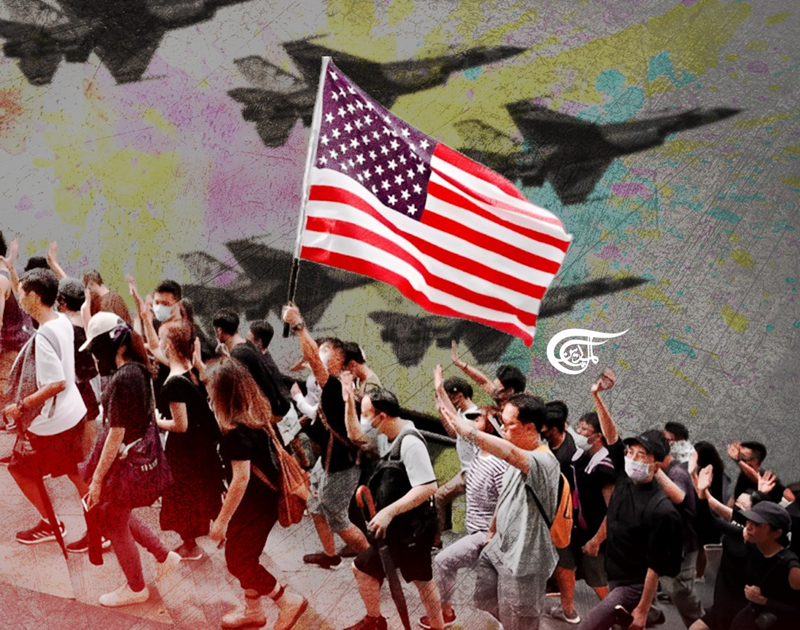
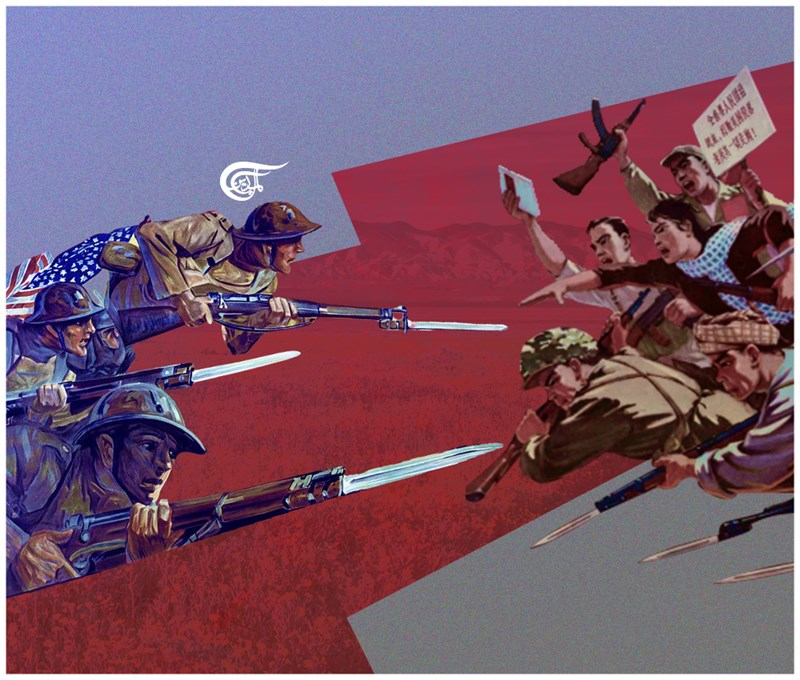
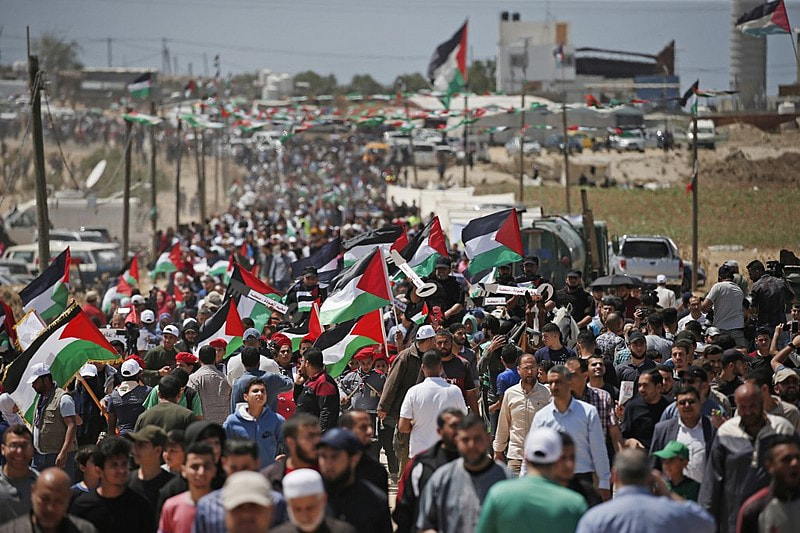



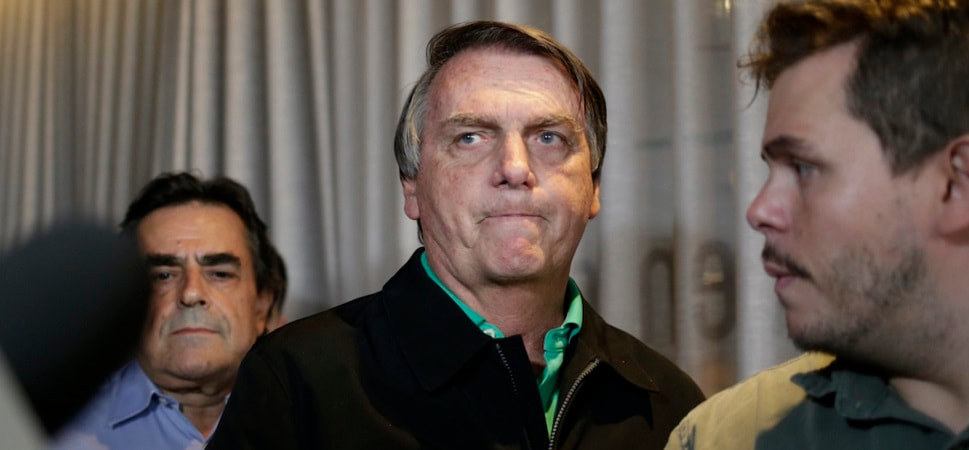
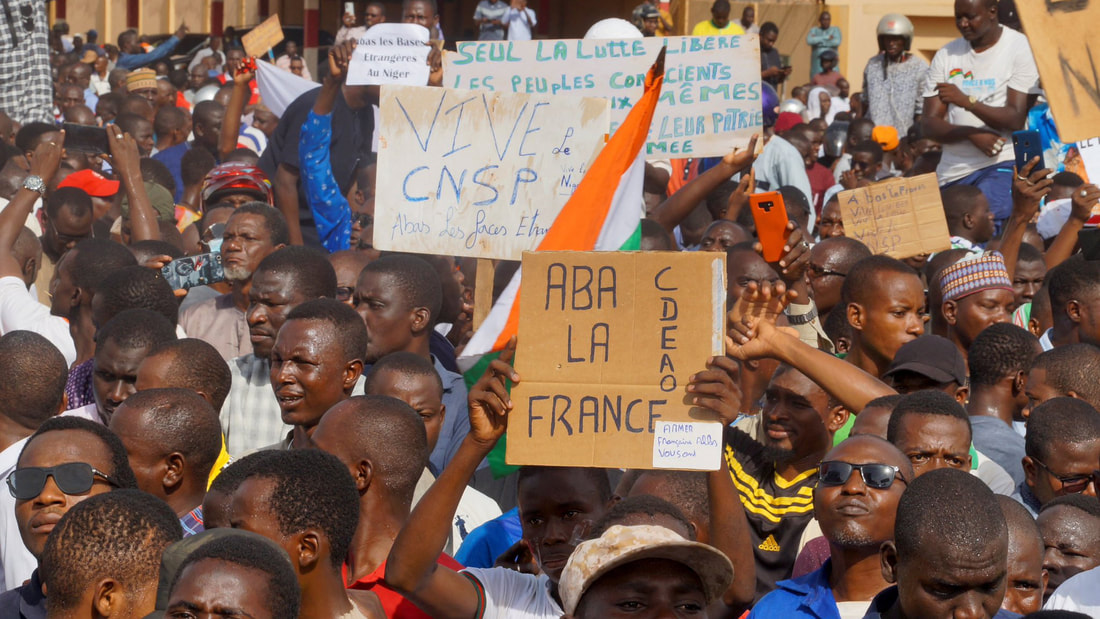
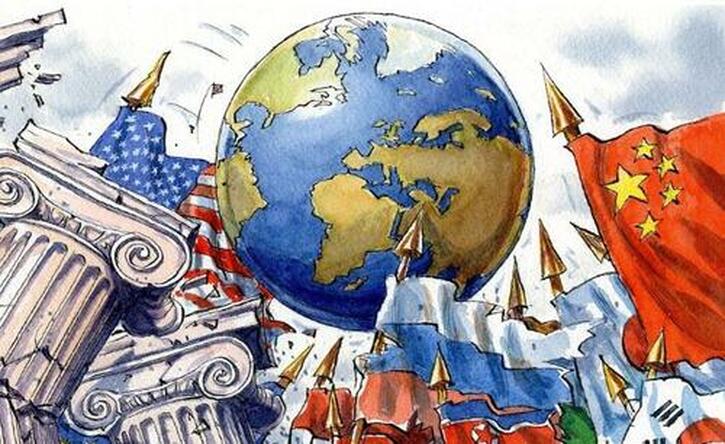
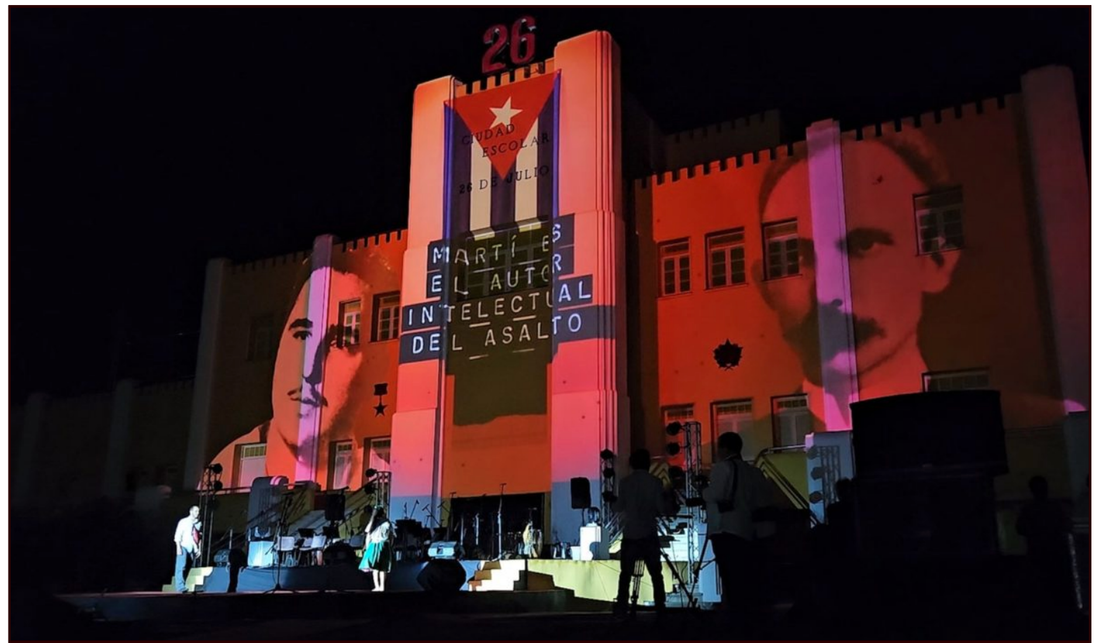
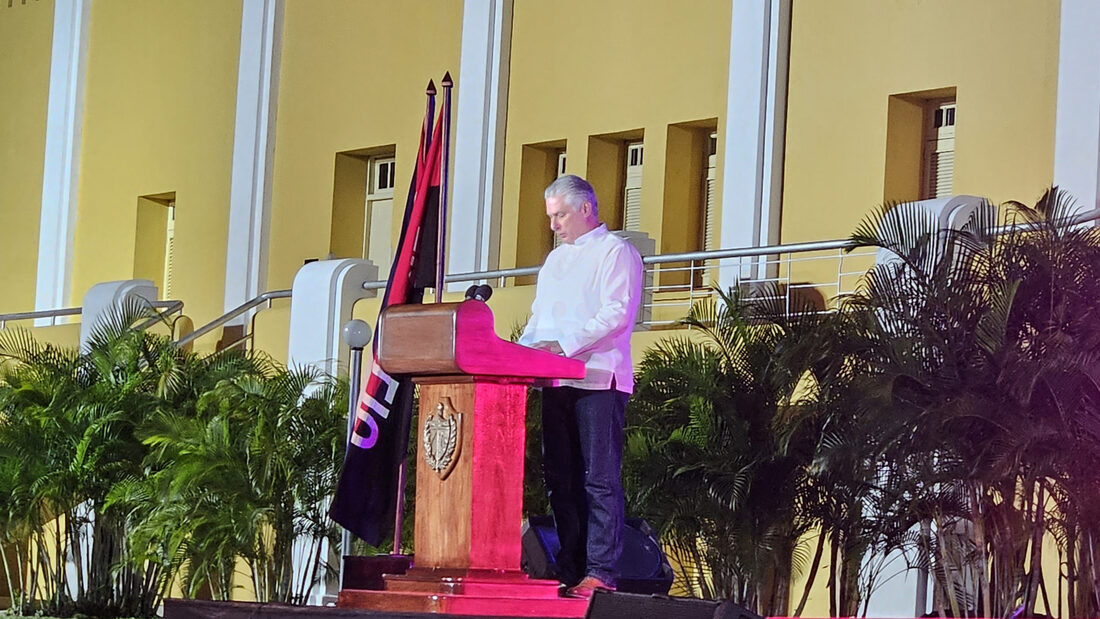
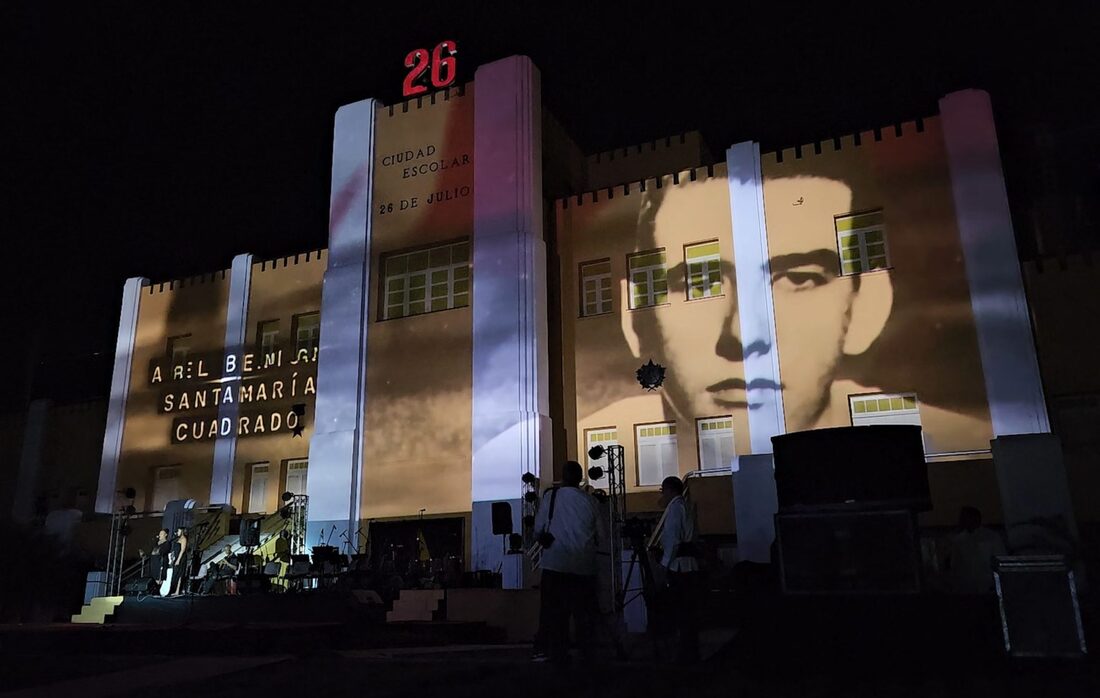
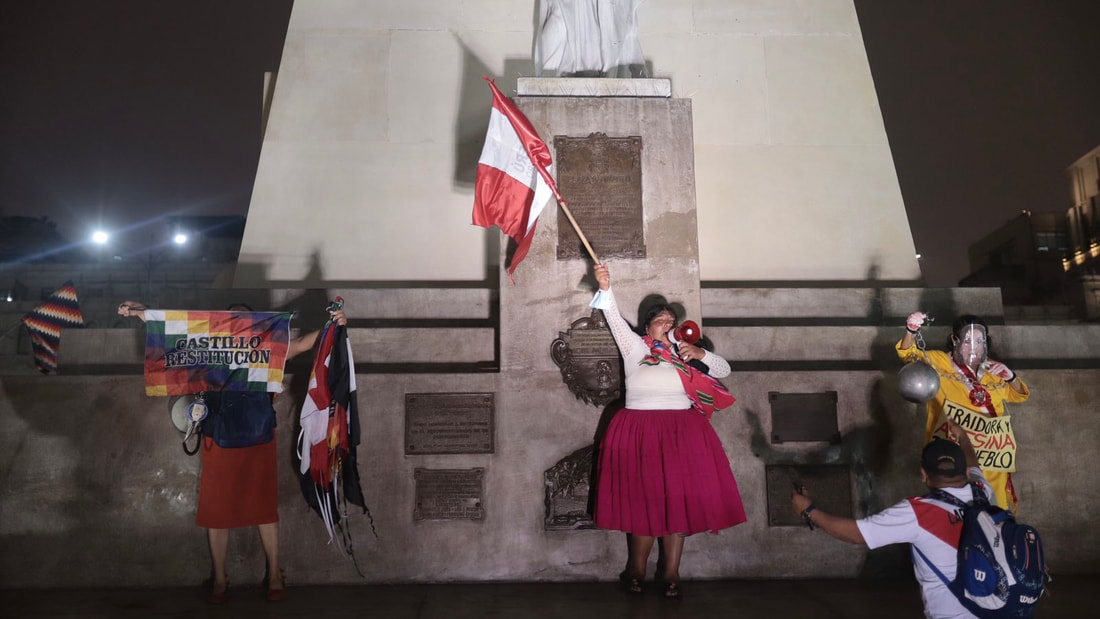
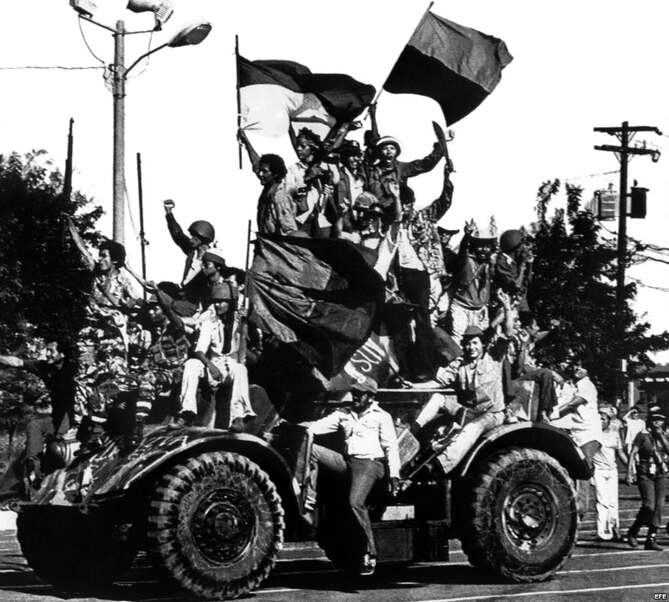
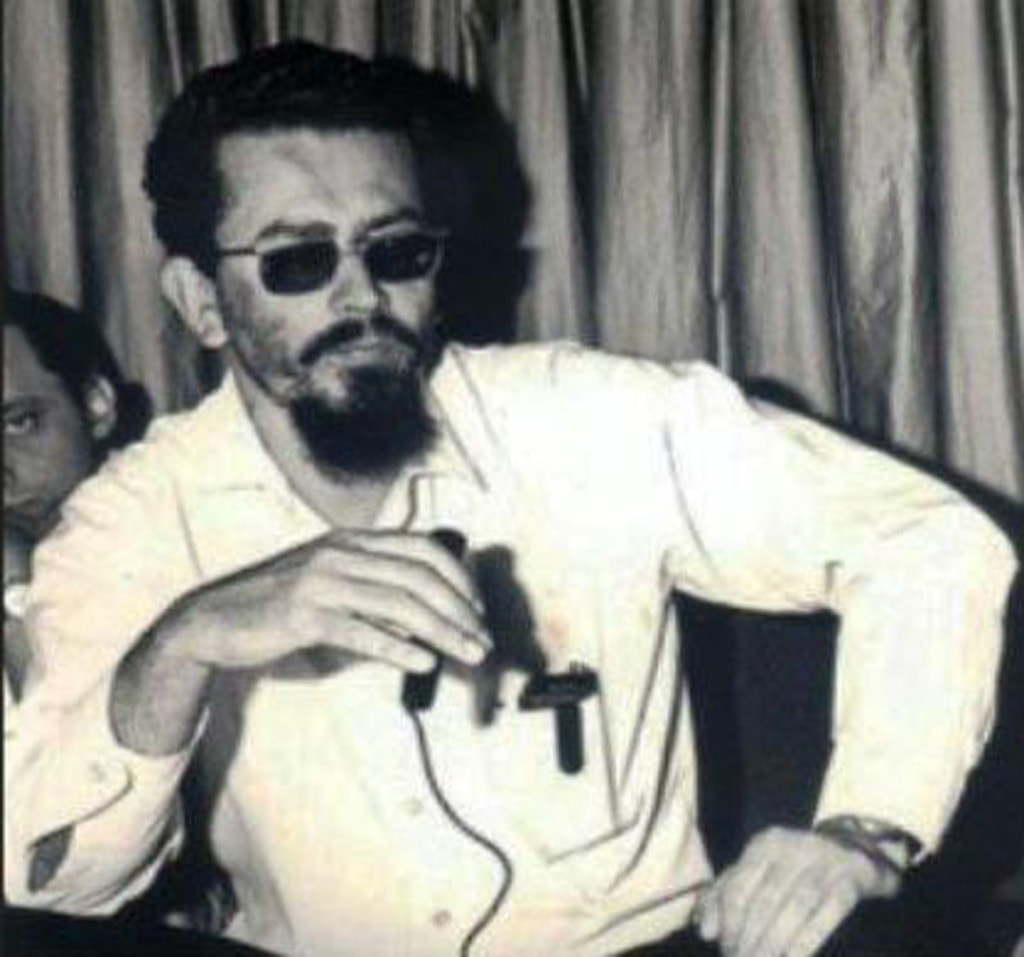
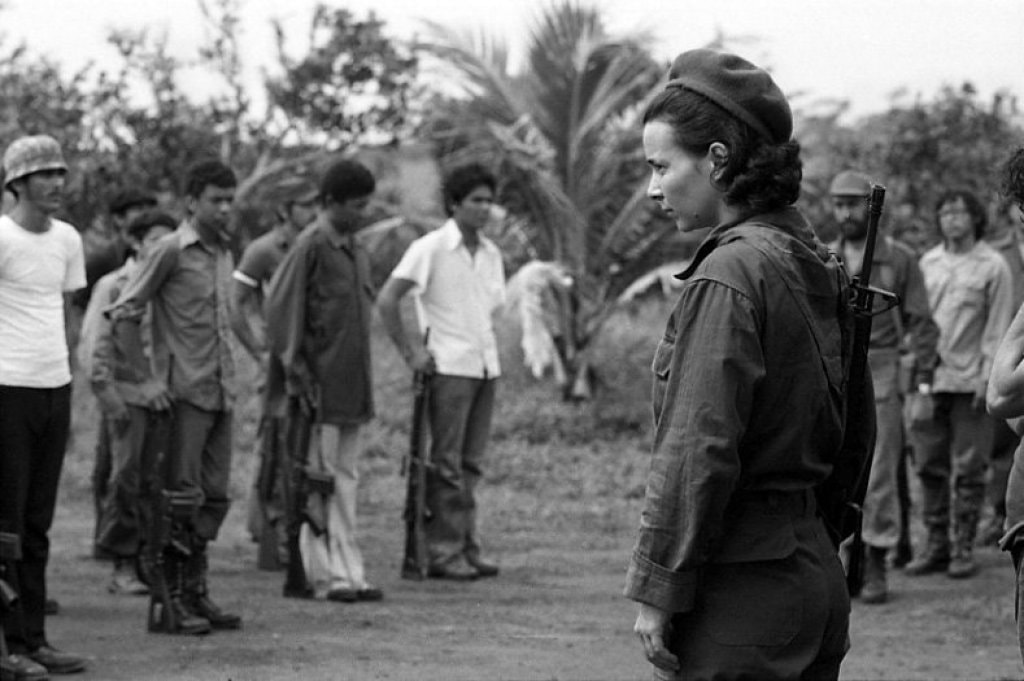

 RSS Feed
RSS Feed